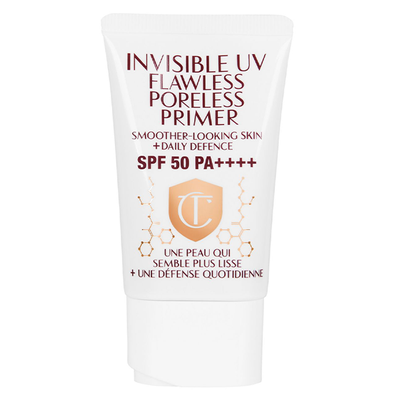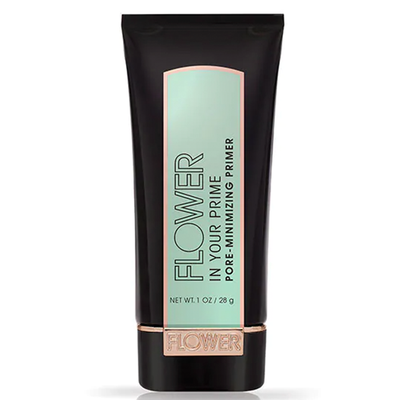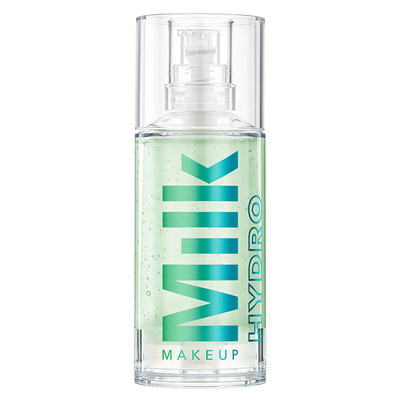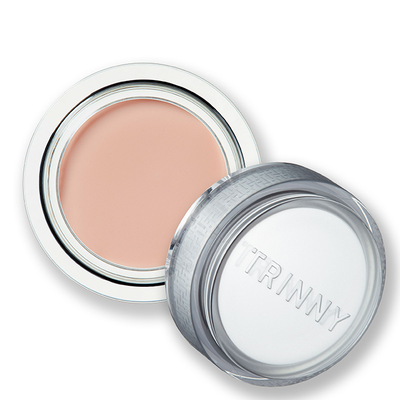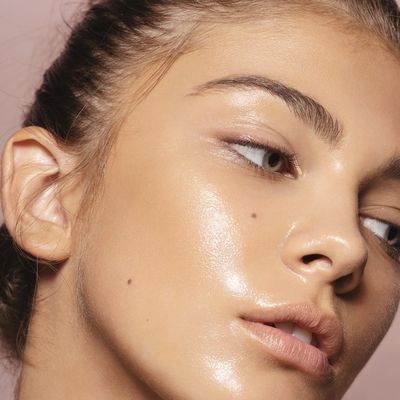
How To Use Primer Correctly
All products on this page have been selected by our editorial team, however we may make commission on some products.
Remember, A Primer Always Comes First
“A primer should always be the first step in your make-up routine. Make sure all of your skincare is complete, then apply a primer before any foundation or concealer. You can also get primers that have an in-built sunscreen, so that’s taken care of, too. Milk Makeup’s Hydro Grip Primer has a clear, green gel which contains aloe water, hyaluronic acid, niacinamide and cherry blossom to hydrate and calm the skin – it’s ideal for summer or sensitive, irritated skin.”
Be Strategic With Your Application
“A primer's job is threefold. First, it acts as a barrier between your skincare and make-up, ensuring the two don’t mix. But it also fills in your pores and fine lines, while holding everything in place. Application-wise, try starting in the middle of the face – think the nose and forehead. These are the places everyone tends to get shine and oiliness, as well as make-up movement and visible pores. It's also the most prominent part of your face when you’re talking to someone, so it pays to focus on these areas.”
Wear It Without Base Make-Up
“People often think primers are only to be worn with foundation, but that’s not true. There are so many formulations available offering that ‘no make-up, make-up’ finish and most can be worn solo. You’ll find some will warm up your skin tone, while blurring out imperfections, like Vita Liberata’s Beauty Blur, which diffuses uneven texture to lend a beautiful, healthy radiance. Shop around to find a formula that fits your skin type, but remember they don’t always have to be used with your base make-up – in fact sometimes they look better alone.”
Don’t Neglect Colour Correctors
“Colour correction involves using opposing shades on the colour wheel to counteract a particular skin tone problem. For example, if you have redness, breakouts or broken capillaries, then a green-hued primer will help to knock that back. If your skin looks dull and sallow, then lavender is your best option to brighten. As for issues like dark circles, peachy tones (or orange for darker skin tones) will lift the entire area. Once applied, layer on your regular base/concealer shade and you’re good to go. There are so many colour correcting primers worth trying – I recommend Make-Up Forever, Erborian and also Clarins for their SOS Primers.”
Know Your Skin Type
“The type of texture you choose depends on your skin type. For example, if you’re oily or prone to shine, look for a mattifying primer – Flower Beauty do a brilliant one that balances out the skin. Enlarged pores, fine lines and skin with scarring all suit a silicone formula that ‘fills’ everything in, like Trinny’s Miracle Blur. If you veer on the drier side and are looking for some extra glow, try a primer that offers both radiance and hydration – the Victoria Beckham Cell Rejuvenating Priming Moisturiser illuminates skin while feeding it with moisture and long-term benefits – it’s genius.”
Stop It Pilling
“Pilling is usually the result of skincare you’re using underneath a primer, so always allow your skincare to be totally absorbed before you go in with any primer. Primer is considered make-up, not skincare, and generally speaking, it’s not meant to be absorbed by the skin. Think of it as a thin shield that protects your skin and enhances your make-up. Be sure to ‘smooth’ it on – don’t massage it in like you would a moisturiser as this could cause issues.”
Use Your Fingers For Even Coverage
“It comes down to what you feel most comfortable with, but primers are easiest to apply with your fingers. This is because they’re mostly colourless and lightweight, so you never have to worry about mess. With areas that have enlarged pores or fine lines, use your hands to really push the formula in, working it right into the skin for seamless coverage that stays put. That said, avoid slathering it on and be strategic with your application. Work from the middle of your face outwards – you don’t need primer around the side of our faces or chin/neck, so just blend it until it disappears. Make sure it’s a simple and quick part of your routine – it doesn’t need to take hours.”
Let Your Primer Set
“It does depend on the texture, but as with skincare, give your primer a minute or so to settle before applying anything else. It needs time to dry and become one with the skin, filling in any problem areas properly. If you’re keen to get going, start with your eye make-up first and do your base just after. If you don’t want to wear primer, instead, simply spritz your make-up to set it instead. Charlotte Tilbury’s Airbrush Flawless Spray is quick, easy to use and delivers a similar effect to a primer.”
Follow @SophieTilley.UK or visit SophieTilley.uk for more advice, tips & tricks.
Shop Sophie's Top 4 Primers…
DISCLAIMER: We endeavour to always credit the correct original source of every image we use. If you think a credit may be incorrect, please contact us at info@sheerluxe.com.
